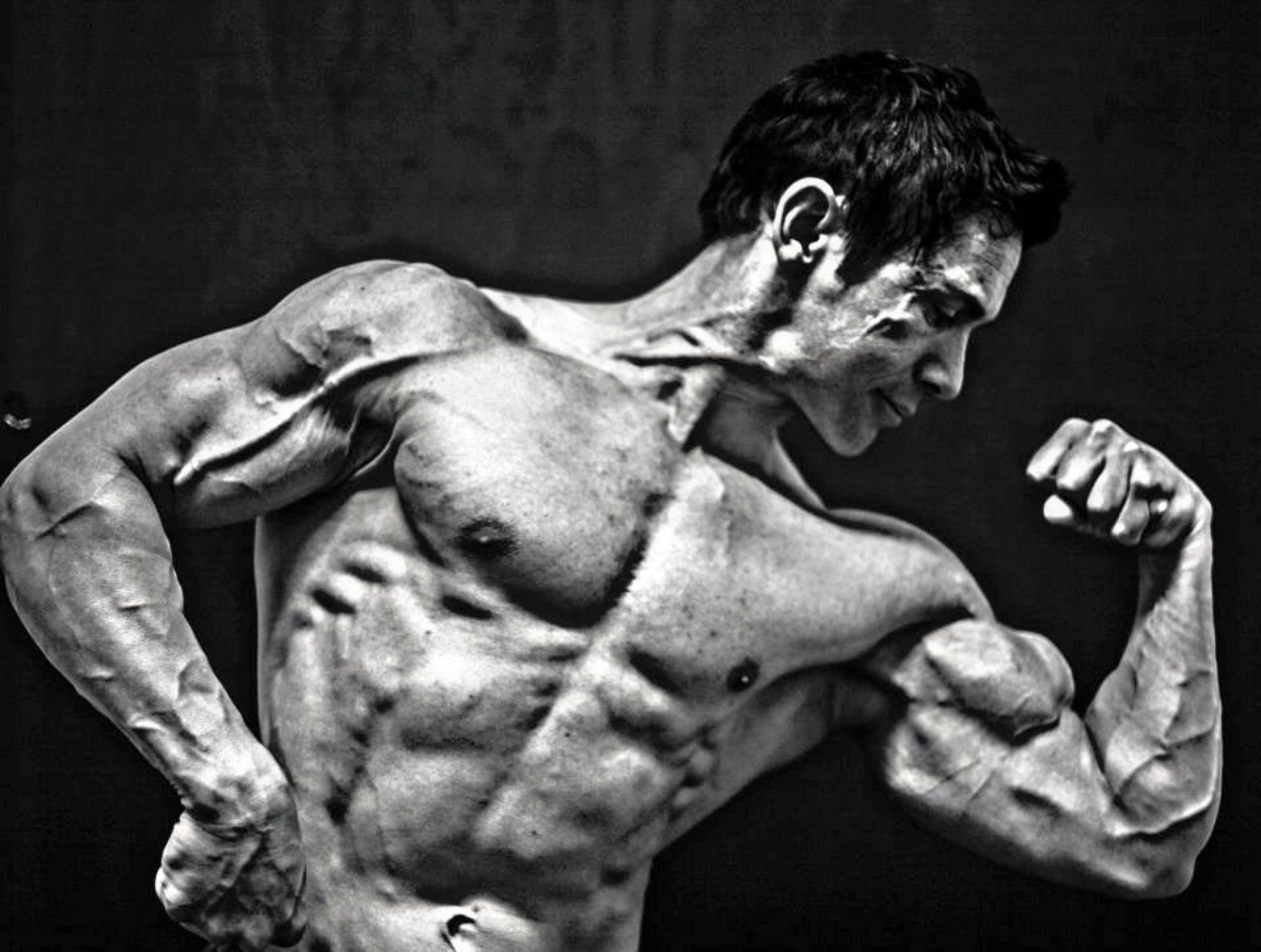I have already talked about the benefits of dumbbell training in my last blog. This time I am going to give you some food for thought in terms of how and why you should perform certain dumbbell exercises to increase your muscle gains.
Take dumbbell curls for a good example. For years I started dumbbell curls with palms facing the body (semi-supinated when arms are fully extended down by my sides) then I would curl the weight making sure I supinated as I reached the top of the movement. Don’t get me wrong, this still produced results, (it hits the biceps and brachialis really well) however, when I began the movement with palms facing forward (supinated) and attempted to make sure my little finger (or inside of my hand) was higher than my thumb side at the top, that’s when I started to see a lot more progress.
This got me interested and I began considering how I performed other dumbbell exercises. I scoured the internet, magazines and books for ideas and found a gem of an article by Larry Scott (The first Mr Olympia). He suggested that wrist position played a big part in the effectiveness of certain dumbbell exercises. For Dumbbell presses and Bench presses he suggests that the little finger side of the dumbbell should be slightly higher than the thumb side. In effect it transfers more of the tension to the side deltoids (if you don’t allow your elbows to travel forward when you press) and pectorals instead of the triceps during both Dumbbell presses and Bench presses.
On lateral raises and bent over laterals he recommends at the top of the movement to have the little finger to be slightly higher than the thumb side. I do not advocate an exaggerated “pouring the jug” movement at the top of side laterals as this can be quite stressful on the shoulder joint. I find if I lean forward slightly and have my little finger slightly higher from the start I have no problems and all the tension goes on my side deltoids.
For triceps kickbacks he also suggests tilting the little finger side of the hand towards the wrist instead of holding it straight for a stronger muscle contraction.
I have found when performing a number of dumbbell exercises that placing my hand differently on the dumbbell grip (changing my hand placement from middle of the dumbbell grip closer to either the inner or outer dumbbell plates) can produce the same effect as wrist position and improve my mind muscle connection with the muscles I am working.
Another great article I found in regards to dumbbell training was by Paul Burke who provided a solution for bodybuilders who have struggled to develop their chest. Often trainers who have long arms and narrow shoulders are at a disadvantage when doing barbell bench presses. His idea was to perform a decline dumbbell bench press as it limits shoulder involvement and shortens the range of motion for leverage disadvantaged trainers. I found this to be especially good for my students at school as some had trouble making a mind muscle connection when they trained their chests. After a few weeks of declines they were able to feel their chest working and see some much wanted progress. It also helped them to “feel” and use other dumbbell chest exercises better too.
So I hope you consider several things next time you use dumbbells. Firstly, consider your wrist position and hand placement during dumbbell exercises; a subtle change could make all the difference for muscle gains. Secondly, consider your unique structure and muscles and find alternative exercises; if the barbell version of an exercise isn’t working for you, try a modified dumbbell version instead.
